
Analysis of Digital Crisis Design: How to Create an Optimal Customer Experience & Why it Matters
- Product Definition /
It’s been a mere three months since the United States followed suit with many other countries as individual states issued stay at home orders to fight the pandemic spread of COVID-19. Today, the world is slowly navigating reopening with a plethora of stipulations and caveats. Our day-to-day lives are going to be radically altered for the remainder of this year and beyond. It is now critical for businesses and organizations alike to understand how to move their digital products forward with a sound and sage approach.
In this article, we’ll look at a few different industry examples of how businesses and organizations have addressed COVID-19 in their digital presence. We’ll highlight what is notable and also quickly becoming best practice for creating an optimal customer and user experience during a time of crisis. From small touches like simple hero banners that direct users to detail pages with more information to dedicated copy, and more complex areas of interaction. We’ll examine options to understand both their impact and value to customers. To have something present reassures your customers and provides them with peace of mind that you are not just aware of what is going on, but have a response to it. This builds confidence and instills trust with customers and users that your business or organization is thinking about their needs on a personal level. But first, let’s review the timeline for the COVID-19 crisis and see why this article is so important.
How Various Industries Are Approaching Crisis Communication UX
In the latter half of February and the first few weeks of March of 2020, many businesses and organizations had to quickly pivot to face a litany of pressing internal and operational issues stemming from the advancement of COVID-19 in the workplace, leaving little time to effectively address customers. Mass emails followed suit from many organizations and businesses citing health and safety concerns as top priorities for both employees and customers in making drastic changes. However, there are still a multitude of organizations that do not have anything immediately displayed on their public-facing website acknowledging these changes. They have yet to address not only how their business or organizations are changing due to the pandemic, but how they are serving alerts, updates, or essential information related to this catastrophic event. This ultimately raises the question: how necessary is it to address customers about the proverbial elephant in the room?
Think of your customers for a moment. What is going through their minds as they are connecting with your business or organization for their needs? Among many things, COVID-19 is front and center. Let’s now examine these industries and explore how they are handling administering their response.
Healthcare
This industry is inarguably on the front-lines. Healthcare is connecting with customers directly on a personal level day-to-day as they respond to COVID-19 on a case-by-case basis. Many healthcare organizations have an immediate visual representation acknowledging how they are handling this situation and other critical or essential information. Many others still have yet to provide a visual acknowledgment to their patients.
Blue Shield of California has done an exemplary job of addressing COVID-19 head-on, implementing helpful information and details directly on their homepage for all incoming visitors.
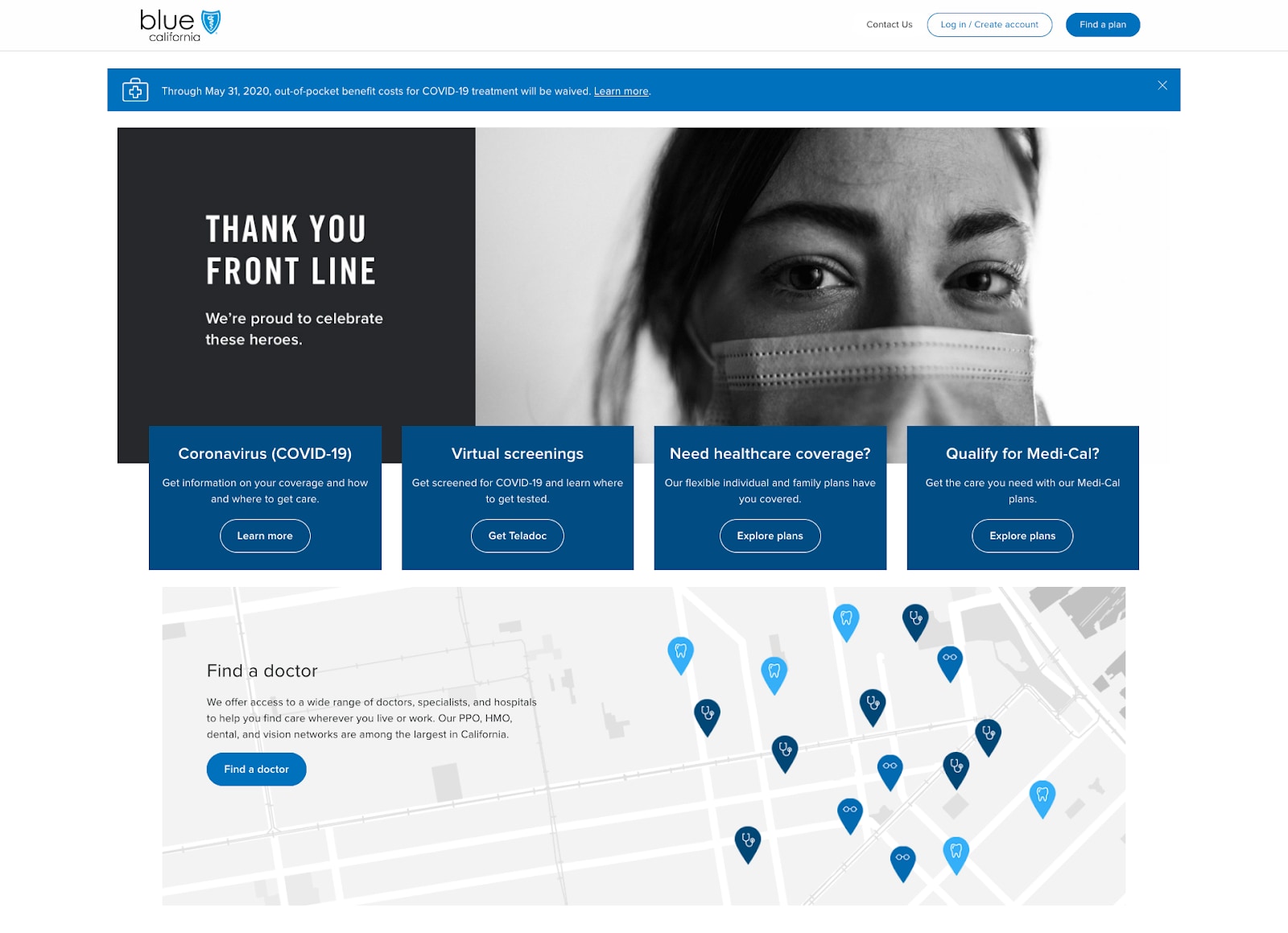
Of note are small, yet important, details that provide essential and helpful information, such as the banner along the top that addresses the waiving of costs to customers, and the four primary information call-to-action areas that address customers’ top concerns when visiting Blue Shield’s site for information. The litmus test — imagine yourself as a concerned customer coming to this site for essential information. Their homepage immediately facilitates establishing trust and providing reassurance that Blue Shield cares about you.
Technology
During disruptive times, product shopping can be a pleasant distraction as well as a critical necessity with many brick and mortar stores completely closed to the public.
As a dominant player in the smartphone industry, it makes sense that a major player like Apple would provide crisis information for their customers about COVID-19. They have a wide reach, distinguished reputation, and social responsibility to uphold.
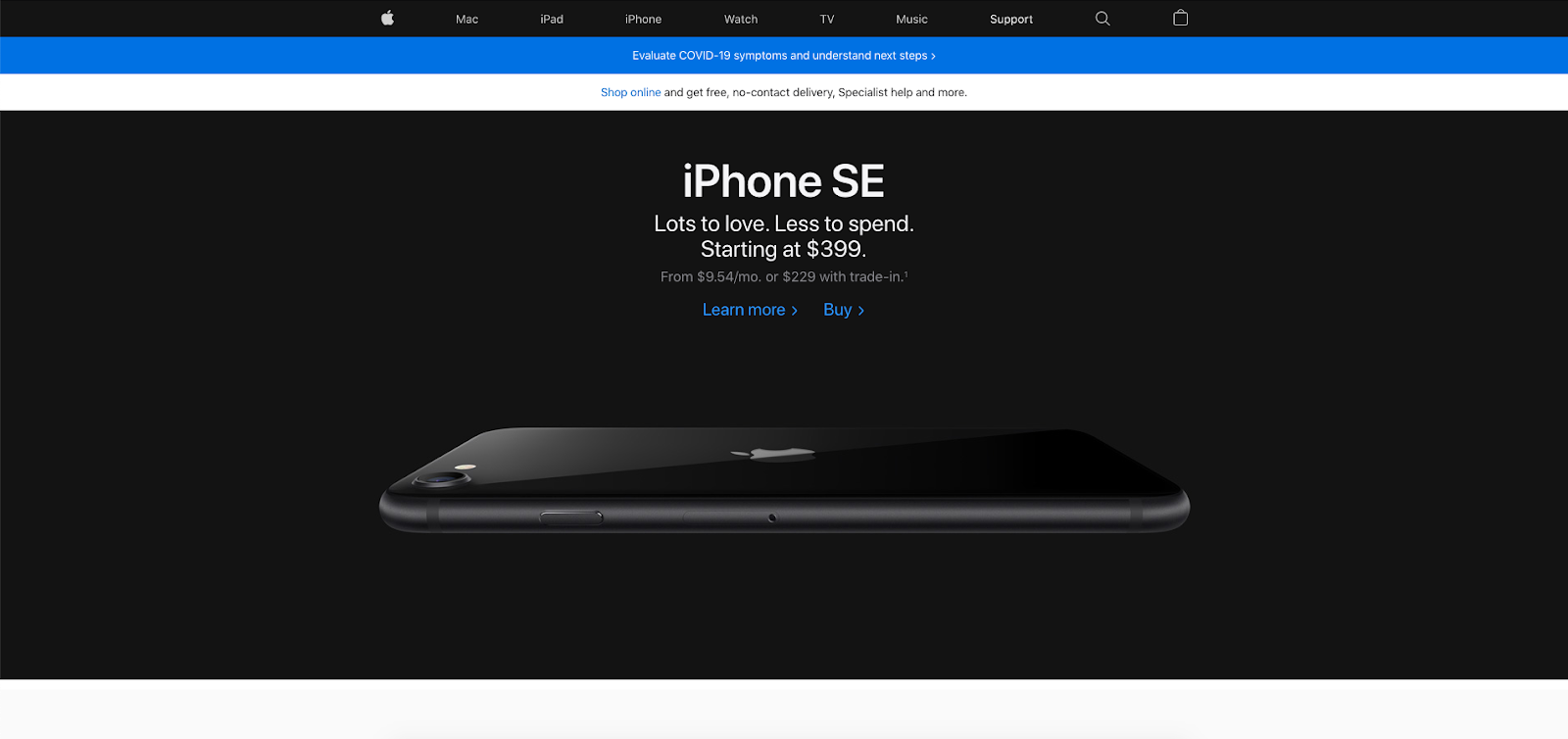
A simple banner in blue on the home page leads customers and users to a COVID-19 Screening Tool page (above).
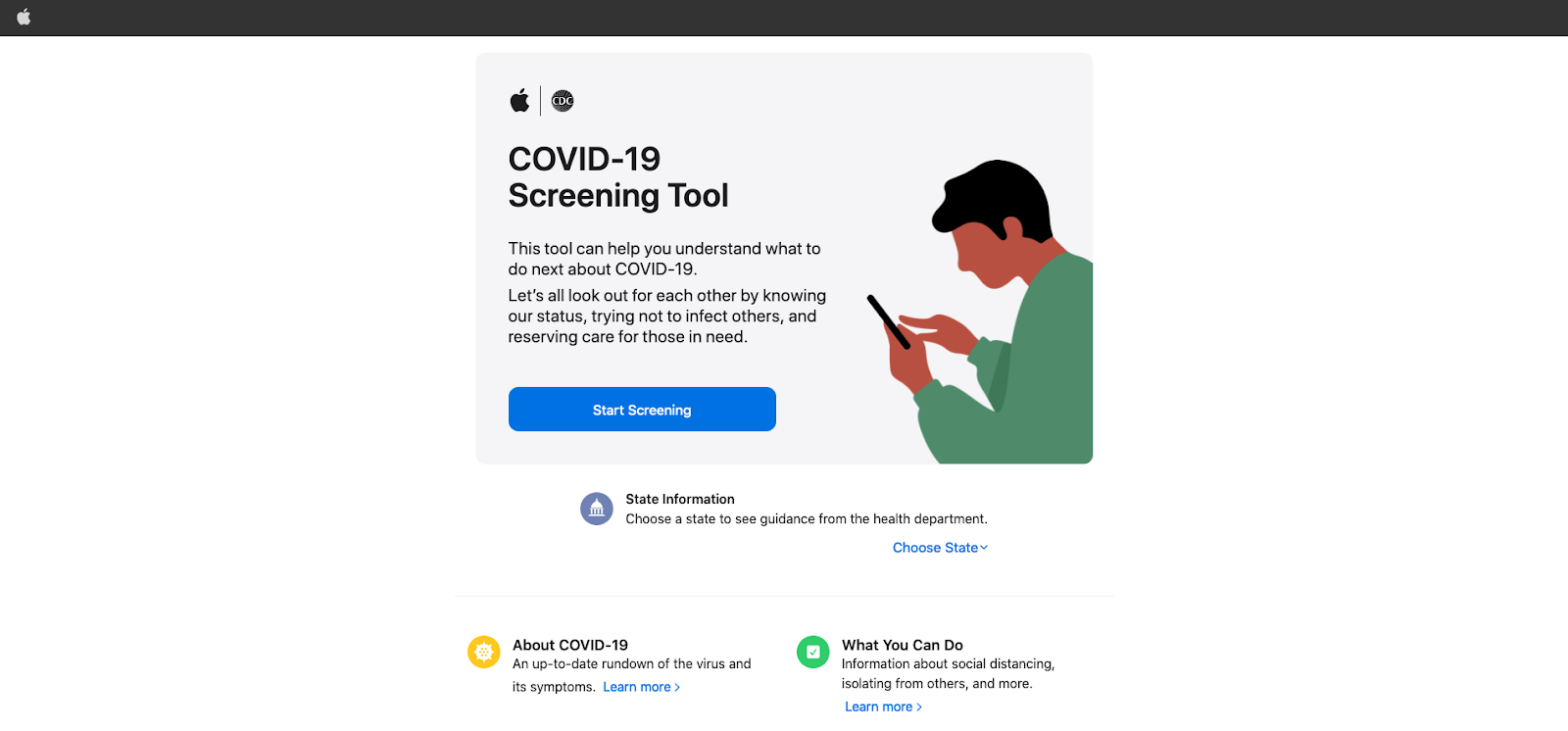
Originally developed by the CDC, Apple has implemented and enhanced their experience, refining it to be simple and easy to use.
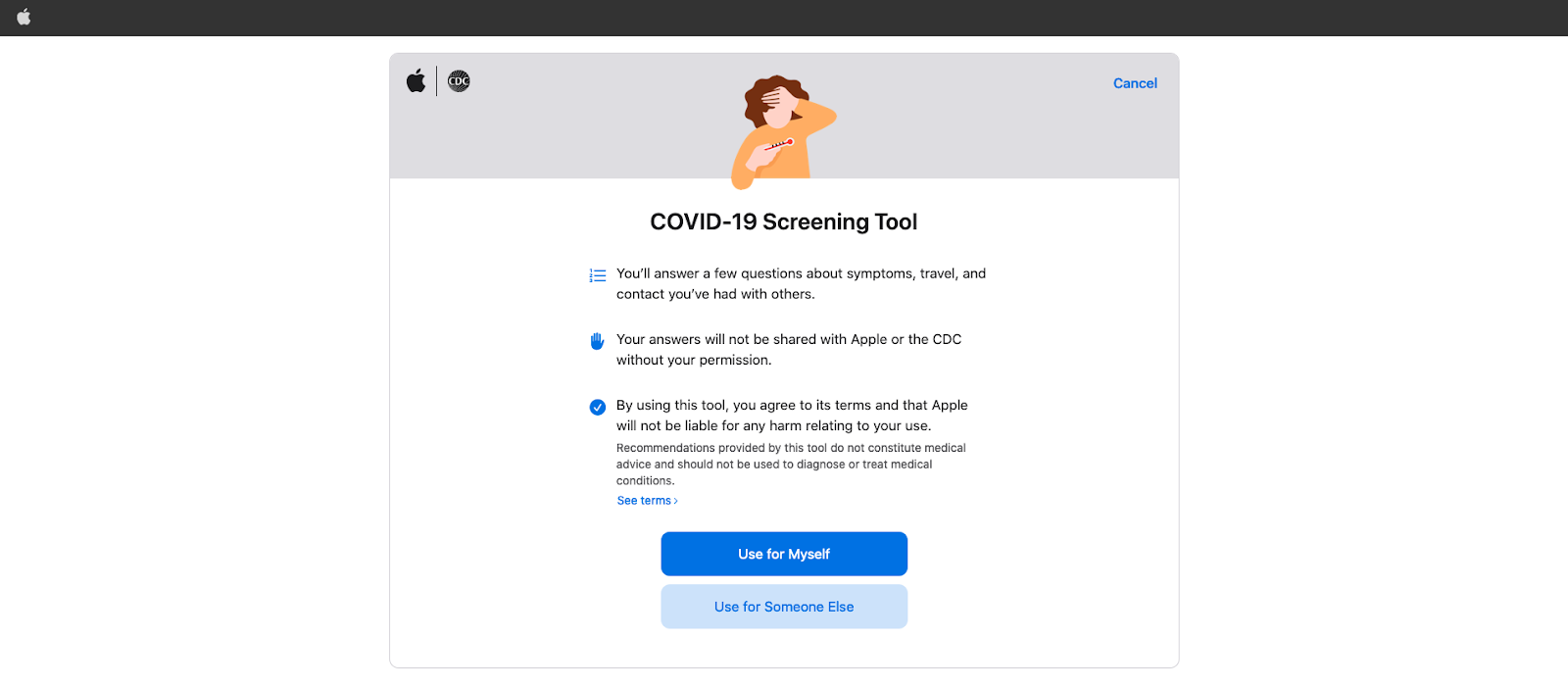
Users answer questions about their current symptoms, recent travel, and contact they’ve had with others to assist in determining how urgent their scenario is, and provide helpful information. Once again, as Apple has such a vast audience and impact on the smartphone market, their push to integrate this kind of experience proves they understand the social responsibility they have for educating the world at large as well as their own customers.
Human Resources
This is an industry that has been dramatically affected by the broad operational changes that have occurred across all types of businesses and organizations since COVID-19 began to change our world. Human resources is also on the front-lines having to address employees directly with crisis-related issues.
Many of these organizations and businesses utilize digital HR tools providing access to critical and up-to-date information. They understand the current and evolving letter of the law is absolutely imperative.
One such digital HR product business is ThinkHR. As stewards of human resource information, they have taken it upon themselves to serve up documentation and helpful articles directly on their public-facing website in a “crisis portal.”
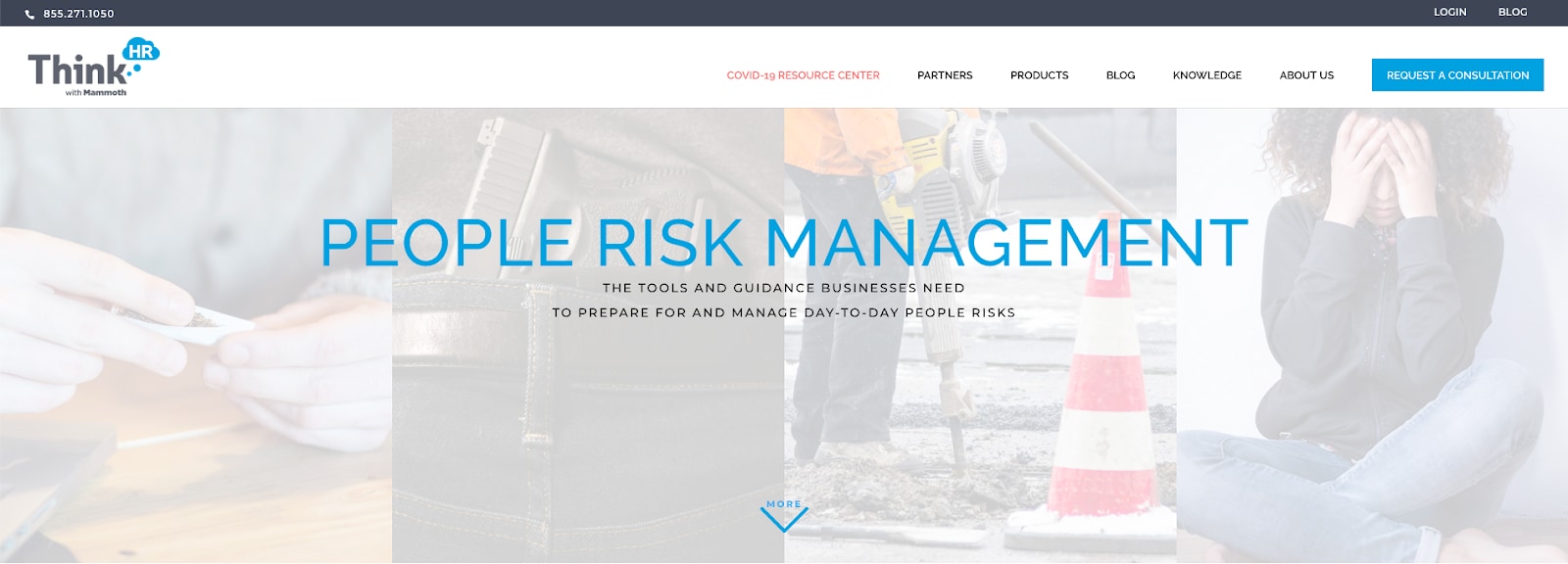
Access to this portal is gained from the very front page of the site, by using the primary navigation (with “COVID-19 RESOURCE CENTER” in red).
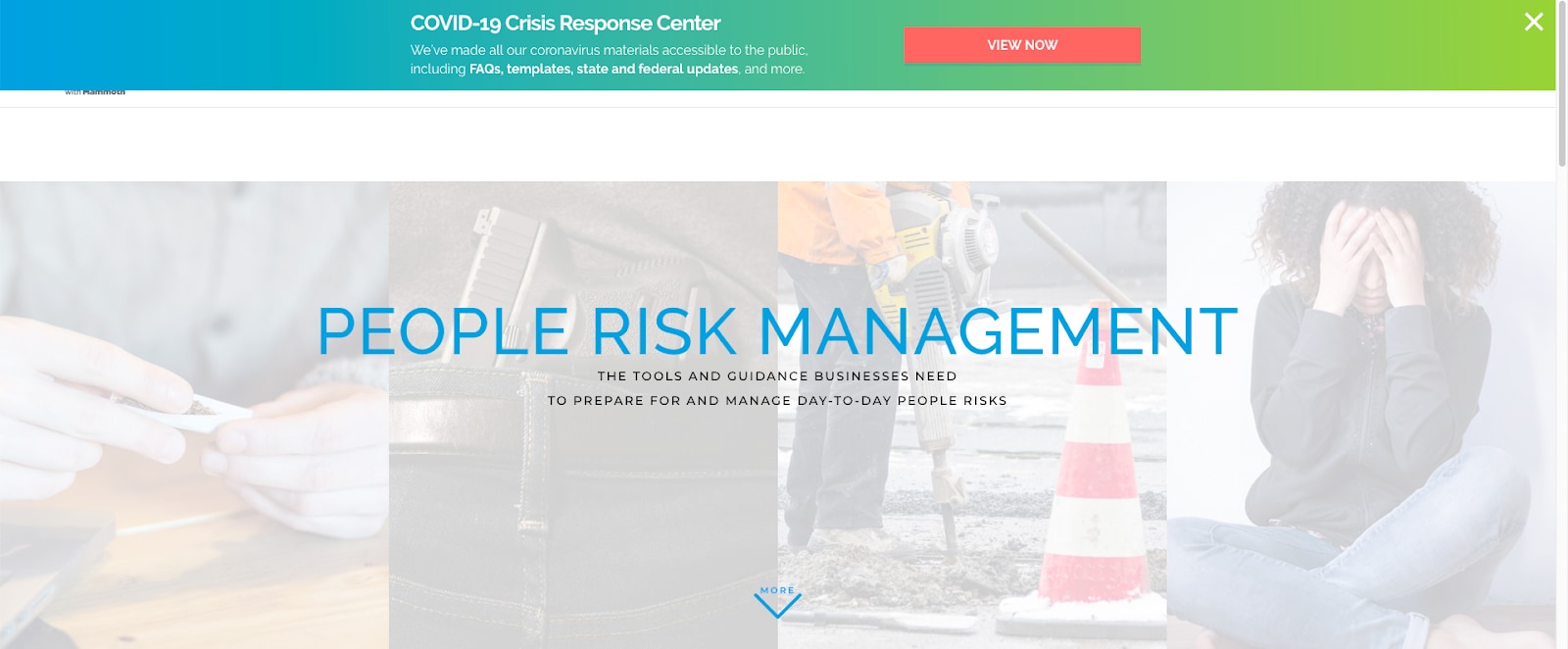
Alternatively, after a few seconds, a CTA button appears that also directs users to the portal.
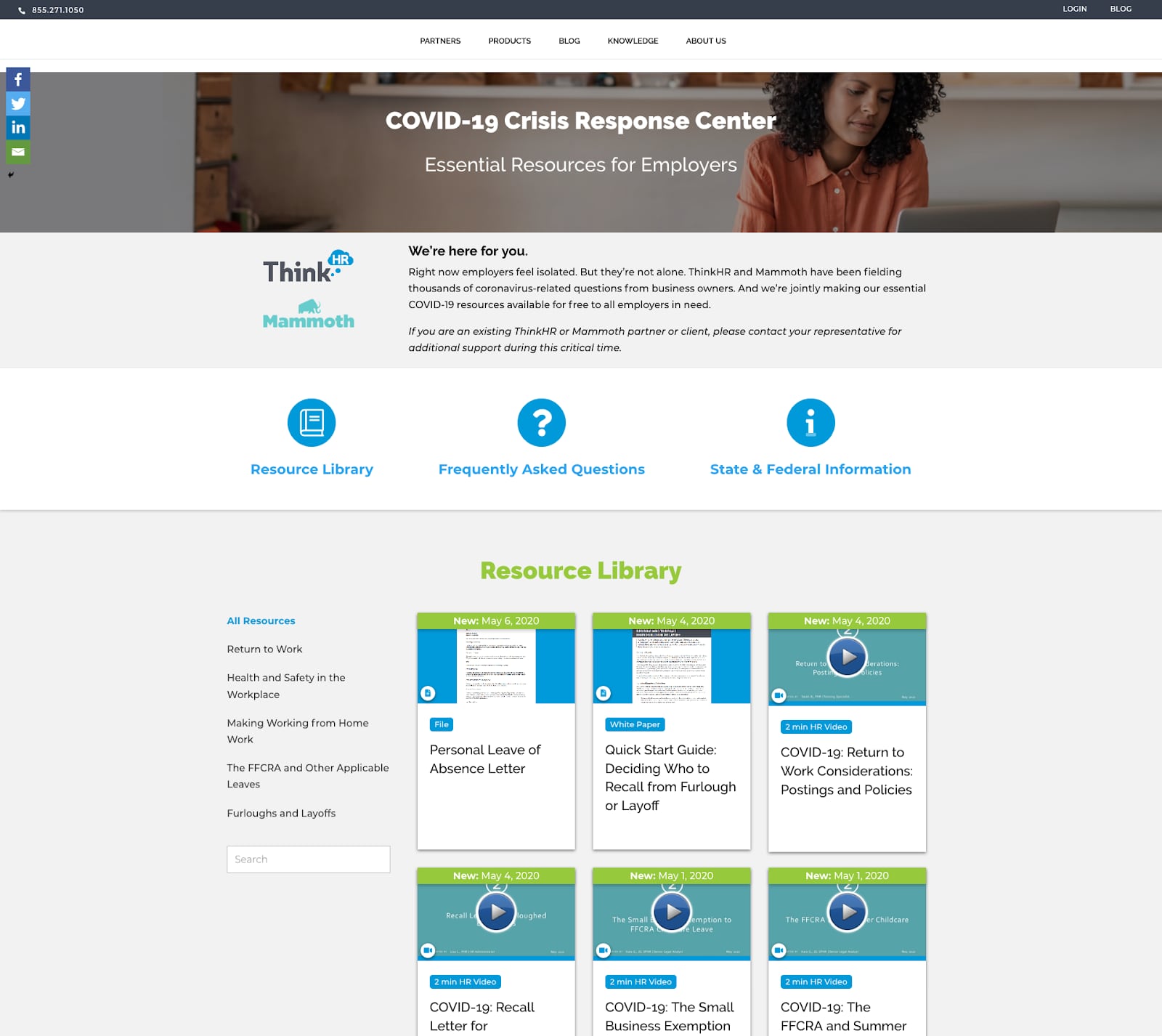
This portal acts two-fold — instilling confidence and trust in existing customers, while providing an extremely valuable service to all human resource professionals, paid customers or not. The latter will likely create many new customers that value a company willing to essentially give away its paid documentation.
Aside from these two benefits, it’s also important for businesses and organizations to address customers with an understanding of what’s happening in the world. It demonstrates (or substantiates) that they are in touch with the world around us all.
How Crowd-Sourced Businesses Are Pivoting During Social Distancing
There are many businesses and organizations with a service model that is entirely driven by community members. These businesses and organizations are completely reliant on customers directly engaging one another both digitally and physically. One of the largest of these is AirBnB.
Effectively, they had two major issues to immediately overcome with COVID-19;
1. Because their entire business is so reliant on the community, they had a major social responsibility for addressing not just their customer base but anybody interested in vacation rentals or short-term rentals.
2. Their entire business model changed with the onset of COVID-19. With customers staying at home and not vacationing, the demand for vacation rentals and short-term term rentals all but evaporated.
To address the first issue, the top-line banner provides a link to information around the crisis and how it affects cancellation policies. They also updated the hero messaging directly on the page to acknowledge the crisis directly.
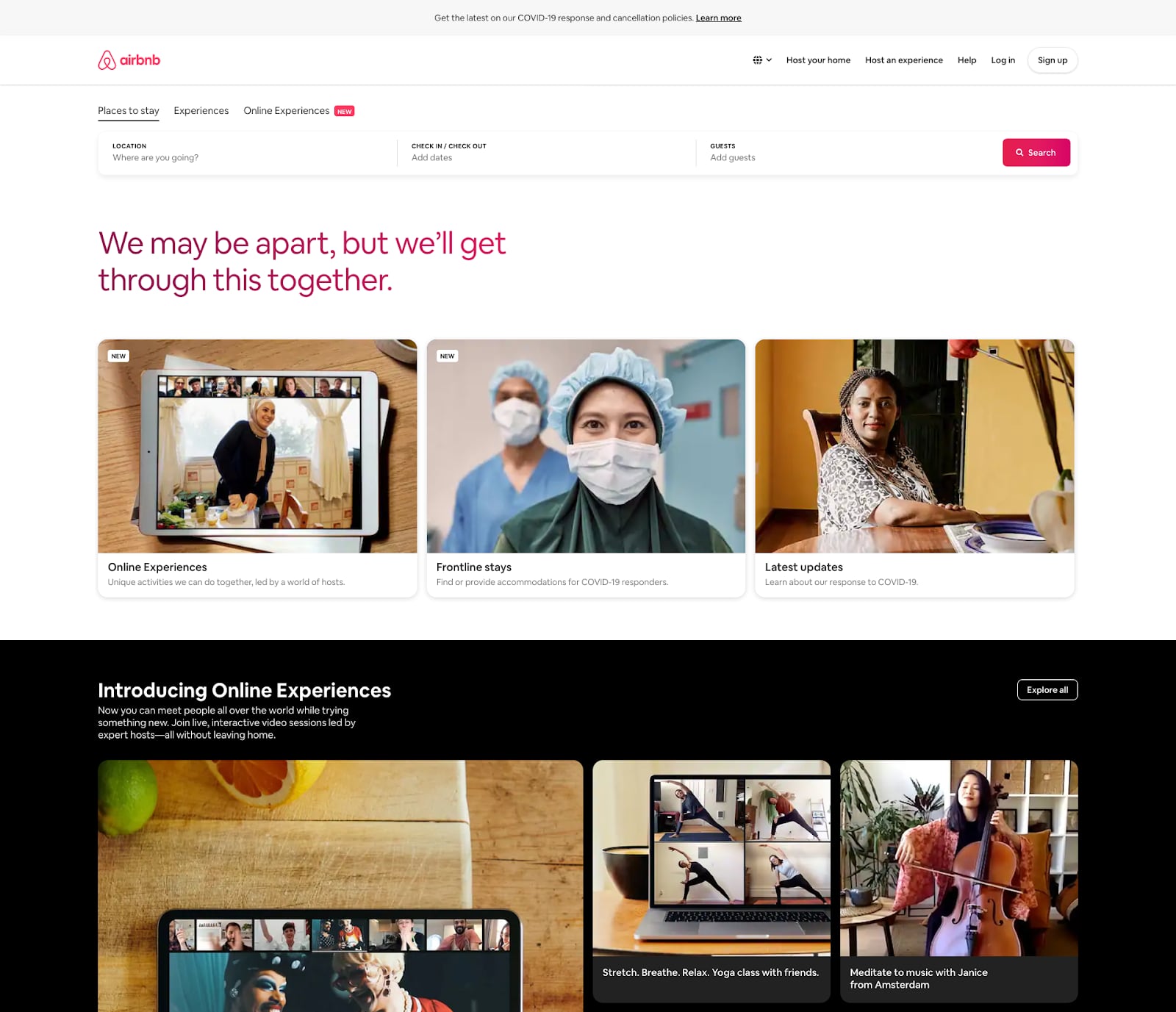
In addressing the second issue, Airbnb created a new outlet around ‘online experiences’ that provides customers with a way to learn new skills, enjoy concerts, and partake in virtual experiences from the luxury and safety of their own homes.
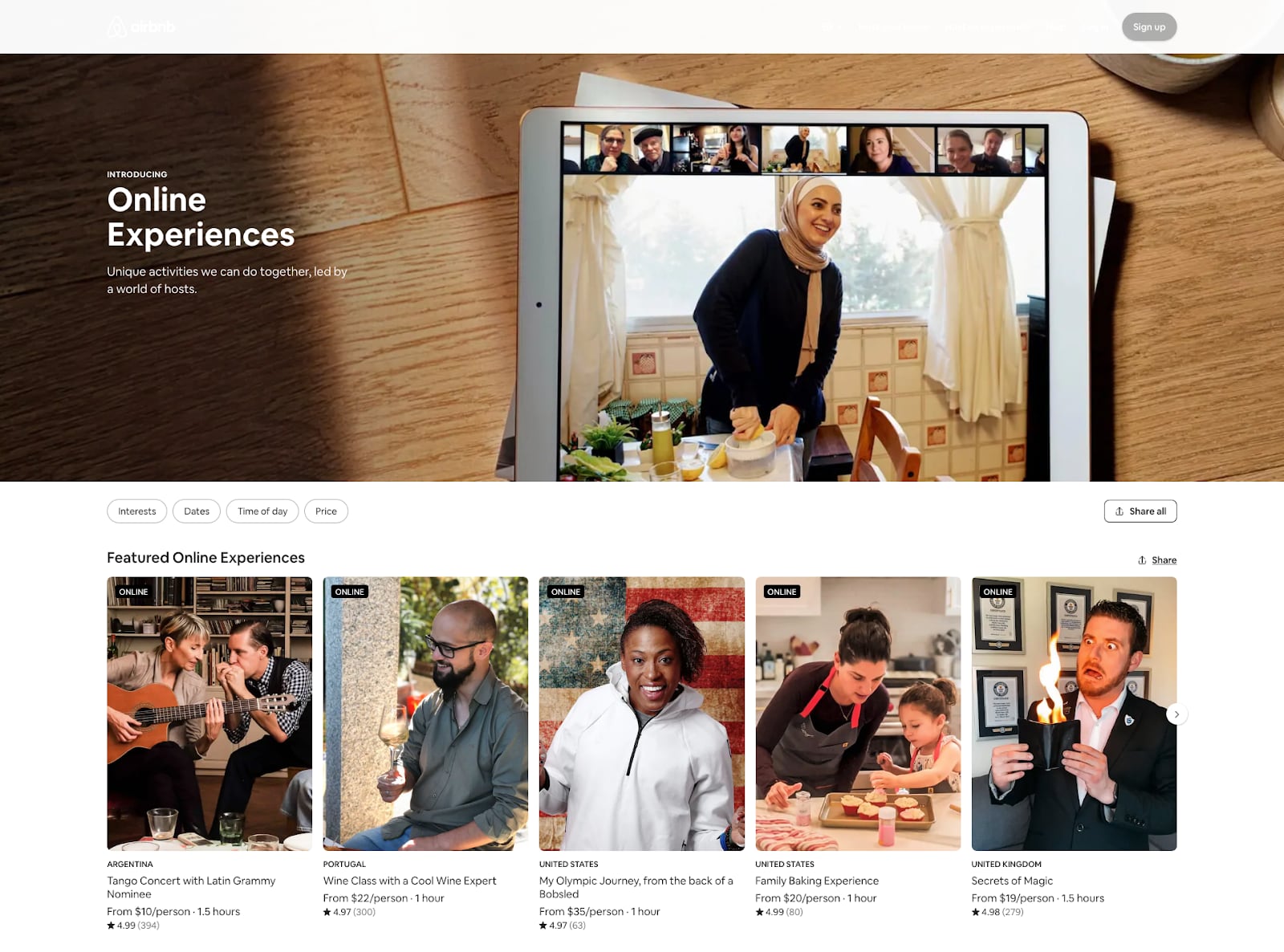
By tapping into their broad customer base to serve up virtual experiences, they have created a new business model that will help them transition through these difficult times while providing a valuable service to their community. Stay at home to keep us all safe.
Three Ways to Strategize Your Crisis Response and Design with Empathy
Whether you have a designed response already in place or need to create one, here’s a way to ensure your customers are getting what they need during a time of crisis and finding it quickly and easily.
- Start with empathy mapping. We have a helpful empathy mapping workshop guide to assist you in identifying your audience’s distinct needs, based on where they are coming from and what they ultimately need from your business or organization. During times of crisis these may fluctuate, so even if you’ve done an exercise like this before it’s a good idea to re-evaluate your understanding.
- Be simple yet empathetic with your words. In a time of crisis, customers can become more ‘reactionary’ because they are looking to resolve immediate pain points and juggling a multitude of issues simultaneously. Be clear with how you provide your response information, and understanding of their pain. Whether these words are headlines, subheadings, CTA button text, body copy, or banner copy, they are all areas to be thoughtful with. Make your audiences feel considered and understood.
- Take care with color and text sizing when designing. It’s ok to use brand colors, but be aware that incoming audiences may have issues with color blindness or vision. Text sizes should be a minimum of 14pt but optimally 16pt. If you need more assistance, we’ve created an accessibility checker app that can help your design team and development team understand and implement these cues to not only meet evolving standards but ensure all audiences have access especially during a time of crisis.
Best Practice is Ultimately Addressing Your Customers’ Needs During a Time of Crisis
We hope you found these examples helpful in understanding how varied industries are handling the current crisis of COVID-19. And, how even small but meaningful ways of addressing your visiting audiences work in tandem to create a better customer experience. “Best practice” is understanding and empathizing with your customers’ and users’ needs and being as direct and as transparent as possible with what is happening all around us. Acknowledge and understand their fear and stress and have a thoughtful way to respond to it. If you have questions or thoughts, please reach out to us. We’d be happy to consult with you.